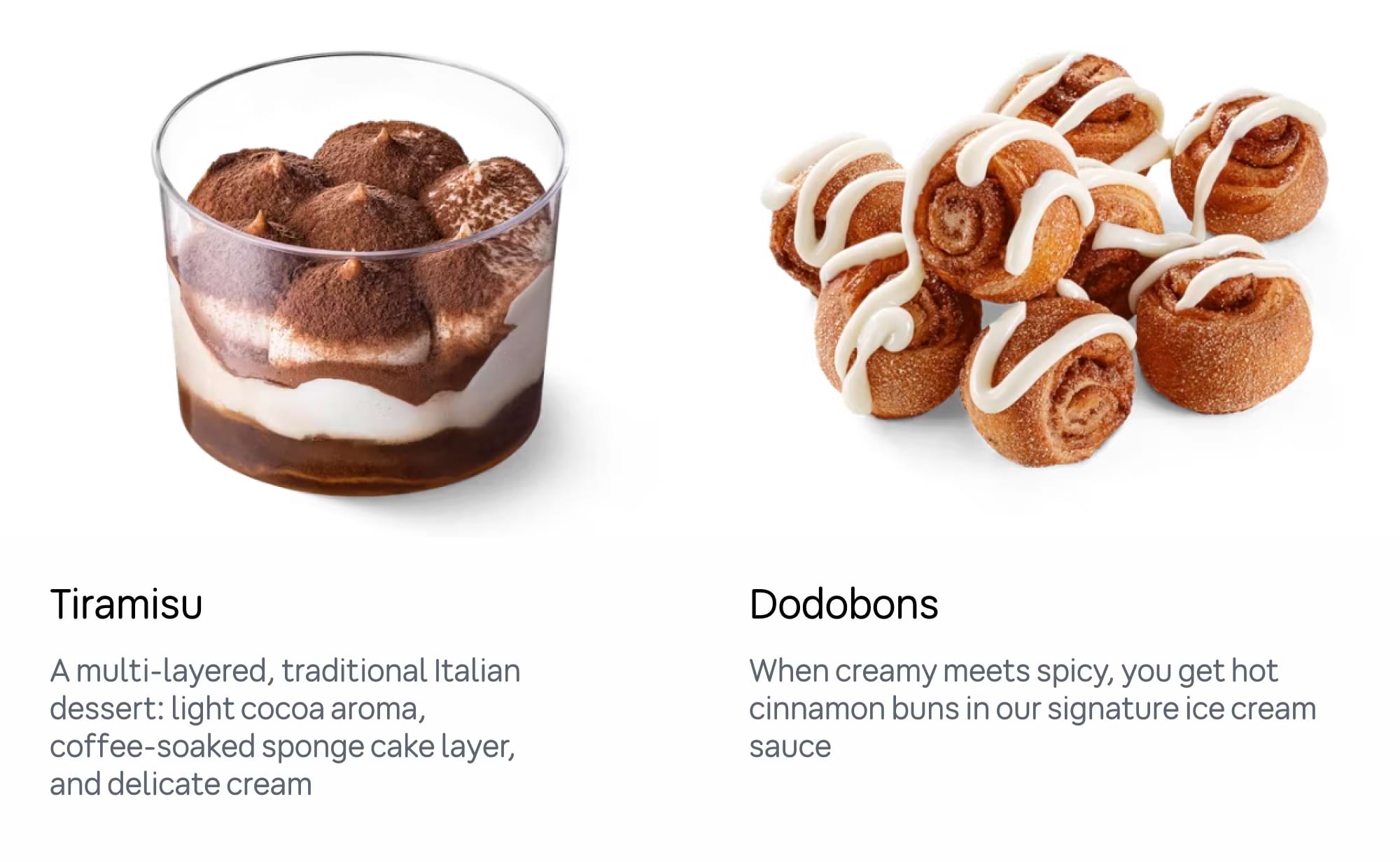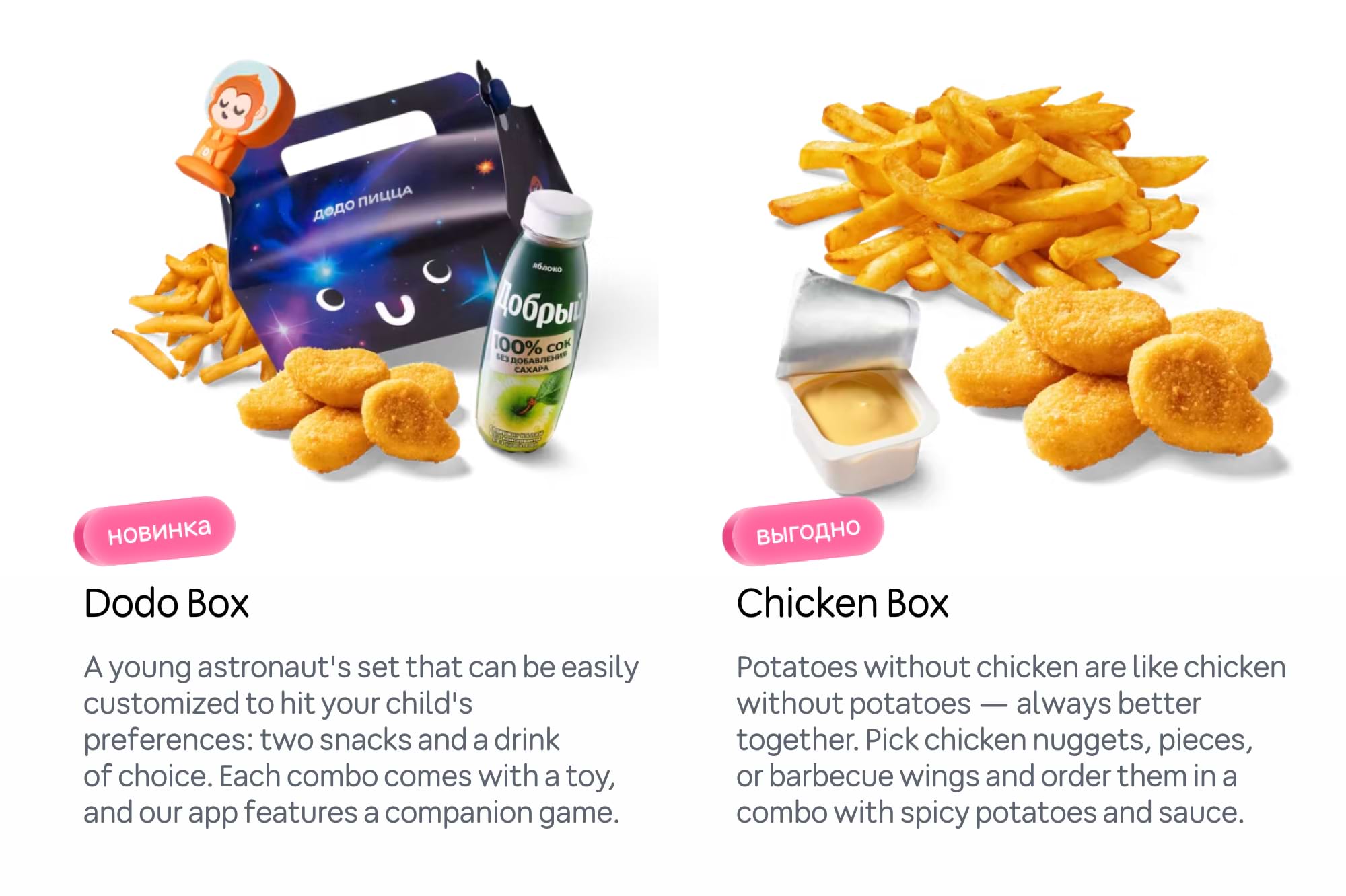Product Descriptions
A product description is as much a branding element as the product name. It helps to reveal the essence of the dish, explain the composition and special features of the product; describe the flavor and set the right expectations. A good description leaves no questions for the customer to ask, anticipates the experience and inclines them to order.
The purpose of this guide is to formulate a unified approach to describing new products, which will help to present them to the customer in a simple, clear way and within Dodo Pizza’s corporate identity.
Description types
There are three types of descriptions:
- ingredient-based,
- branded,
- fantasy.
Ingredient-based. This is just a plain list of the ingredients in the right order (at the end of the guide). Such descriptions are a good fit for the current pizza categories and some appetizers.

Branded. These are storytelling descriptions. With them, we highlight special ingredients or recipe features, create context around the product, and tell the customer why they should try it.
We talk about real attributes, not abstractions.

Fantasy descriptions. This is a narrative built around images and words. Such descriptions work if they match the tone of the brand and the image of the product. If they are creative for creativity's sake, it's better to skip.

General principles
Stick to the main rules:
- We develop combinations that include both a title and a description.
- We write in the Dodo Pizza tone: accessible, open, respectful.
- We don't overdo it with emotions: we don't use words like “looney” or “explosive”.
- Remember the purpose: the description should help the customer to make a choice.
- We follow the style of advertising product descriptions.
Keep the limits in mind.
Character limit. Taking into consideration our mobile app’s new design, descriptions should not exceed 125 characters for all categories. It's important to fit within this format without losing your thought.
Ingredient order. While we're using the ingredient format for pizzas, it's important to keep the order of ingredients in the description:
- First the main ingredient (such as shrimp).
- Then the important component of the recipe (e.g., pesto).
- Then the vegetables: first of all, those to which you may be allergic or have flavor restrictions (mushrooms, onions, sweet peppers).
- Minor vegetables (tomatoes, pickles).
- After that, mozzarella.
- At the very end, the base sauce (specialty tomato or alfredo).
This order helps the customer quickly read the main thing, see the key flavors and make an informed decision.
Read next:

